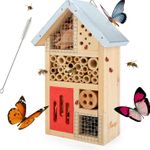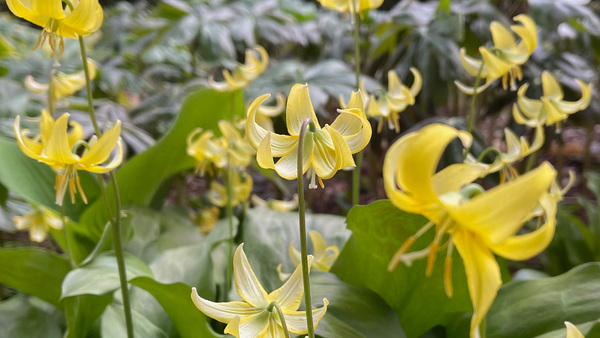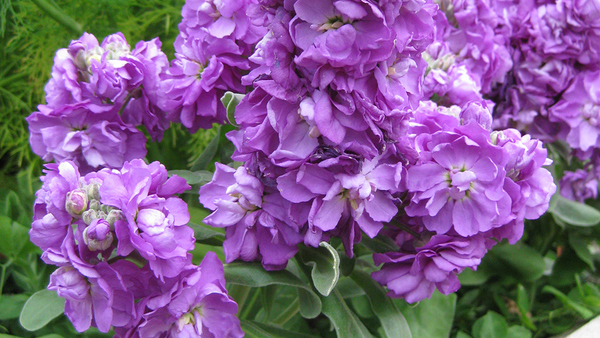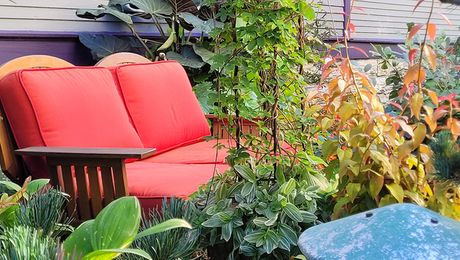
While cool nights and diminishing daylight in fall triggers putting our gardens to bed at the forefront of our minds, don’t forget that this is the time to consider enlivening the spring garden with fall-planted bulbs. Our local garden centers and nurseries carry a wide range of beautiful and hardy bulbs for fall installation (as do many mail-order sources), with familiar tulips (Tulipa spp. and cvs., Zones 3–8), daffodils (Narcissus spp. and cvs., Zones 3–9), crocus (Crocus spp. and cvs., Zones 3–9), and hyacinths (Hyacinthus orientalis and cvs., Zones 5–9) regularly grabbing our attention. These more common bulbs are certainly valid for their spring contributions; however, a little more sleuthing will unearth some more-unique additions for your repertoire of spring-flowering bulbs. Below are five of my lesser-known favorites that I feel are worthy of consideration and appreciation in the Midwest spring garden.
Sicilian honey garlic displays delightful flower drooping flower clusters in May
My gardening inspiration is my mom, who grew all sorts of plants very well. The Sicilian honey garlic, or Mediterranean bells (Allium siculum, syn. Nectaroscordum siculum, Zones 5–10), which she planted among her showy roses (Rosa spp. and cvs., Zones 2–11), were one of her favorites. After plants gain height on strong 48-inch-tall stems, the blooming happens in late May, featuring clusters (umbels) of drooping, bell-shaped flowers in shades of cream, pink, and green. Each flower umbel has up to 30 individual blooms (and interesting seedpods too!) that are attractive to bees. Sicilian honey garlic is disease and pest free and perennializes nicely in full sun to partial shade. Bruising the foliage or stems releases the strong scent of garlic. Do note, however, that this plant is toxic to dogs and cats.
Star of Persia is a standout in the spring garden and in a vase
While there are many species and selections of fall-planted ornamental onions (Allium spp. and cvs., Zones 3–9), the star of Persia (Allium cristophii, syn. Allium albopilosum, Zones 5–8) features a dramatic 8- to 12-inch-diameter globe (umbel) featuring over 100 individual star-shaped, silvery lilac flowers. I’ve planted thousands of this sun-loving, hardy bulb over the years and have had no regrets. Displayed atop a roughly 18-inch-tall stem, the globe-shaped flowerhead even looks good drying in the garden or gathered in dried arrangements. Blooming in late spring, this elegant bulb is deer-proof and attracts butterflies. Some reseeding has been observed, although cutting the flower head in advance of seed dispersal is an option. Alliums are also black walnut tolerant.
Checkered fritillary will stop you in your tracks with its wonderful patterning
Native to damp meadows and woodlands in Europe, checkered fritillary (Fritillaria meleagris and cvs., Zones 3–8) will naturalize if happy in comparable full-sun to partial-shade conditions. Also called guinea hen flower, this species flowers on delicate, upright, arching 12- to 15-inch-tall stems above grassy foliage. The drooping, bell-shaped flowers feature a faint checkerboard pattern upon closer inspection and come in shades of reddish purple and white. With few insect, disease, or deer problems, this charming bulb will be a conversation piece out in your garden and looks great in groupings and drifts.
Corn leaf iris delivers long-lasting blooms above unique foliage in early spring
Corn leaf iris (Iris bucharica and cvs., Zones 4–8) is a bulbous species with a lot of charm in early spring when its lightly scented, long-lasting yellow and white flowers unfurl. Flowering begins at the end of the stem and continues downward. The V-notched leaves of this plant are in an interesting, stacked format, which looks similar to corn foliage—hence the common name. The top of the foliage (later going dormant) is quite glossy, and this species, native to Central Asia, is both deer and drought tolerant. Corn leaf iris grows to 16 to 18 inches tall and 12 inches wide and prefers full sun to partial shade. Note that it is toxic to cats, dogs, and horses.
Blue Danube wild hyacinth is a stunning naturalizer
Blue Danube wild hyacinth (Camassia leichtlinii subsp. suksdorfii ‘Blauwe Donau’, Zones 4–9) blooms in late May into June with large spikes of prominent, numerous blue florets that feature yellow stamens. Blooming above clumps of narrow leaves, these many flowers are supported on stout 30- to 36-inch-tall stems and open from the bottom to the top of the stem. Also commonly called great camas, this species prefers fertile, humus-rich, moist, and well-drained soils in full sun to partial shade. Ample moisture is vital for this easy, naturalizing bulb, which provides the perfect shade of blue in spring gardens. There are many other Camassia selections available that are also worth exploring.
—Mark Dwyer is the garden manager for the Edgerton Hospital Healing Garden in Edgerton, Wisconsin, and he operates Landscape Prescriptions by MD.
Photos: Mark Dwyer
Fine Gardening Recommended Products

Niteangel Natural Wooden Insect Hotel, Garden Insect House for Ladybugs, lacewings, Butterfly, Bee, Bug
Fine Gardening receives a commission for items purchased through links on this site, including Amazon Associates and other affiliate advertising programs.

Gardener's Supply Company Summerweight Fabric Plant Cover
Fine Gardening receives a commission for items purchased through links on this site, including Amazon Associates and other affiliate advertising programs.

Plant Covers Freeze Protection 10 ft x 30 ft Floating Row Cover 0.9oz/yd²
Fine Gardening receives a commission for items purchased through links on this site, including Amazon Associates and other affiliate advertising programs.
























Comments
Log in or create an account to post a comment.
Sign up Log in